One of the main CDN advantages is to provide secure and optimal web performance wherever a user is located around the world. So if you are looking for a way to improve the speed and security of your website, a content delivery network (CDN) comes in very handy!
In this article, you’ll learn the 8 benefits of using a CDN and the actual impact on performance.
That’s right: there are 8 reasons for choosing a CDN and helping your website perform faster and safer globally. Let’s discover all of them.
1. Boost Page Speed and Performance
The primary advantage of a CDN is to give an extra speed boost to a website. When running a performance audit, GTmetrix recommends “Use a Content Delivery Network (CDN) to improve delivery time”. This is not coming from Lighthouse directly but from GTmetrix itself.
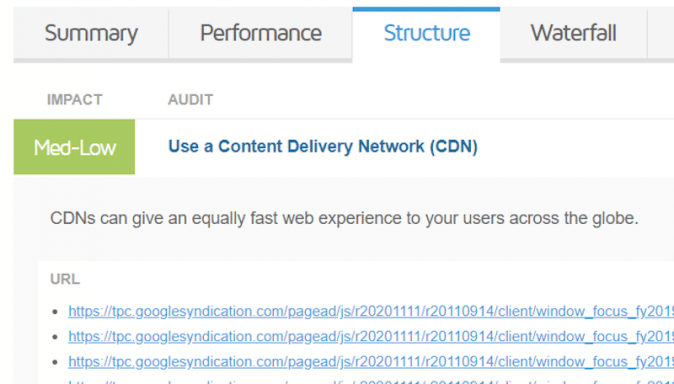
Google PageSpeed Insights (PSI) recommends to “Serve static assets with an efficient cache policy” which can be also interpreted as using a CDN to better serve the data.
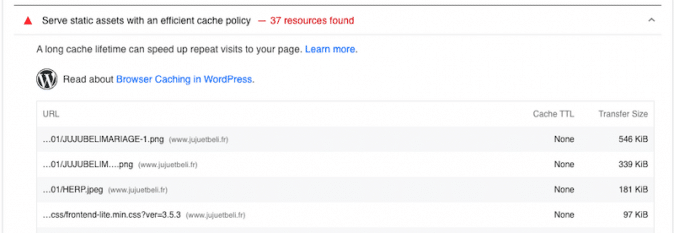
The reason for these recommendations is simple: a CDN uses caching to keep copies of the content on points of presence (POS) around the world. As a result, a CDN ensures that visitors receive content from a geographically closer server.
Why is it essential to follow such recommendations? Because a CDN is critical to optimizing key performance metrics such as the Largest Contentful Paint (LCP) and the Interaction to Next Paint (INP) – two Core Web Vitals measuring performance and user experience.
Let’s explain the correlation between a CDN and the performance metrics.
LCP calculates the loading time of the largest visual element on a website. If the visitors are far away from the server’s location, loading this large element could take a while. Using a CDN could make this process faster and give a little boost to the LCP score.
FID is the time from when a user first interacts with your site to the time when the browser responds to that action (a click, a tap on a button, etc.). Using a CDN will help reduce the time between the user request and the server response.
The impact on performance metrics goes even beyond Core Web Vitals. For instance, Total Blocking Time (TBT) is another Lighthouse metric correlated to FID. It measures the total amount of time your page was “blocked”, preventing the user from interacting with it. JavaScript files are often the culprit of a high TBT – and a CDN helps deliver the JS more efficiently.
In addition to Core Web Vitals and TBT, a CDN can also positively impact the server response times. This responsiveness is measured by the Time to First Byte (TTFB). The faster a web server responds, the quicker a site will load. Several factors can affect TTFB, such as network latency. A CDN will reduce latency because it delivers the content to users according to their localization and proximity to a presence point (edge server) — and that’s how a CDN can reduce TTFB.
2. Improve SEO Performance
Another benefit of using a CDN is to have a better position in the search results. Why? The Core Web Vitals are also part of the whole Google Page Experience ranking factor that aims at measuring how users perceive the experience of interacting with a page. The better the user experience, the higher the chance your website will appear in Google’s ranking.
A CDN improves the interactivity of the loading time, ensures security, and delivers content faster to mobile users. All those benefits are directly related to the search signals, as shown in the figure below:
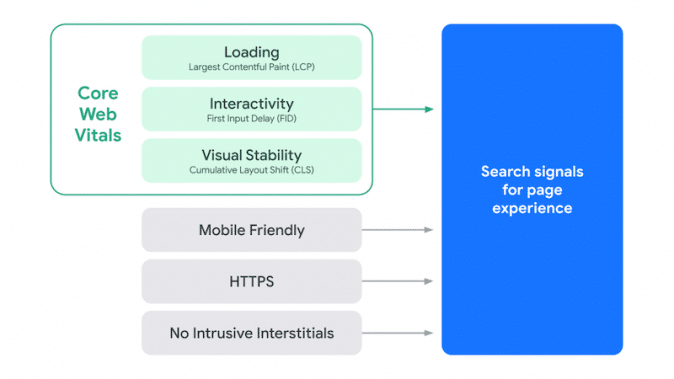
The quality of the information is still important for SEO. Still, for two websites with similar content, the Page Experience will make the difference when it comes to the position in the search results.
3. Decrease Server Load
Distributed around the world, a CDN can reduce your server load and speed up your website by caching your site’s static content. On average, a website has up to 80% of static assets. By caching those static files, a CDN can help by offloading data from the origin server.
The server load can be caused by the excessive usage of the system resources. The more CPU and disk space your servers need, the larger their load is. Using a CDN will make the roundtrip (server to browser) much shorter resulting in a reduced Round-trip time (RTT).
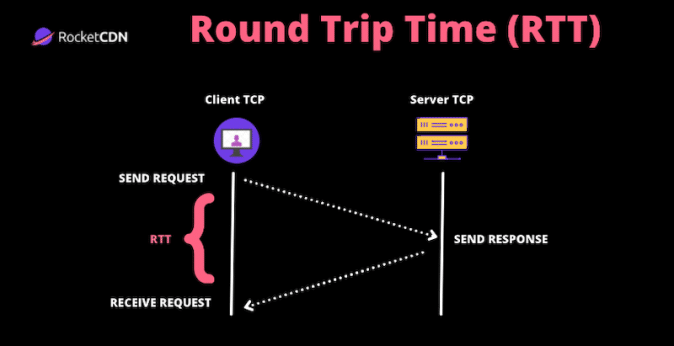
4. Reduce Network Latency
Network Latency – also called lag or delay in communication over a network – can be significantly reduced thanks to a CDN.
A CDN caches and compresses copies of a web page, which are stored around the globe in strategic points of presence. Content is then delivered to the international visitors according to their location. Below is a figure showing how a CDN makes the users closer to the servers to reduce network latency.

5. Improve Reliability and Redundancy
Another perk of using a CDN is delivering content quickly and keeping a website online despite possible hardware failures or network congestion.
A good CDN balances the internet traffic and automatically provides another server if an edge server becomes unavailable. This is the principle of automatic redundancy, a communication pathway that guarantees the availability of the content under all circumstances.
A CDN will redirect the traffic from the failed server and distribute it proportionally across the functioning servers.
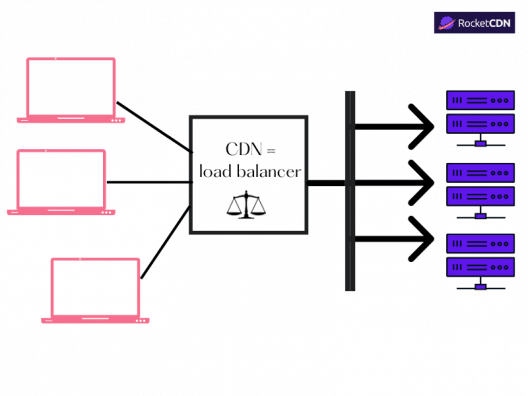
It’s worth mentioning that a CDN can continue to deliver the data even in case of a peak in traffic. It takes over the “main” bandwidth to ensure that the site is always up.
6. Reduce Bandwidth and Cost Saving
A CDN serves cached content meaning that the origin server is not solicited for delivering the same content over and over again. Less data needs to be transferred from the origin servers to the users resulting in lower bandwidth costs (and cheaper bills from your hosting provider).
In the figure below, we see how much data are processed through a CDN (in red) compared to the original bandwidth (in purple):
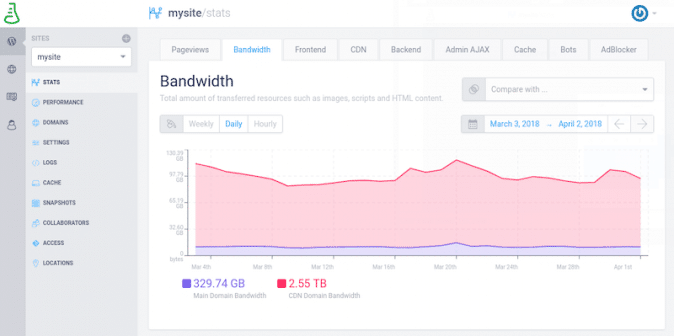
7. Get Protection Against DDoS Attacks
A CDN helps redistribute traffic when needed, efficiently protecting against DDoS attacks. A CDN ensures that the attack doesn’t reach the origin server if a website is targeted. It adds a protection layer to ensure the site stays online and protected from attacks.
As shown below, if there is only one server, the service can go offline very easily:
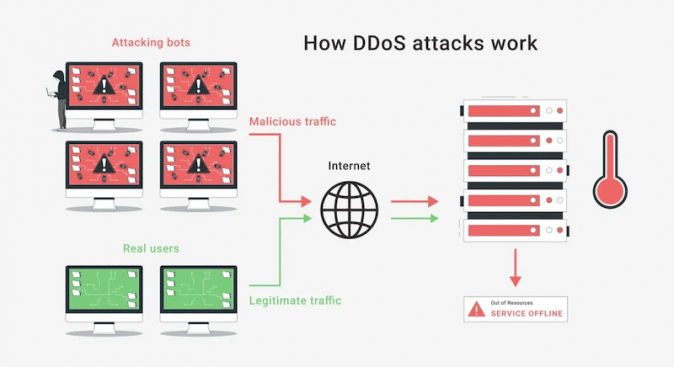
Another advantage to protecting a website with a CDN is that you allocate enough bandwidth to handle traffic spikes that cyber-attacks may cause.
8. Achieve Global Reach
You can also use a CDN to optimize the experience of your international visitors by achieving a worldwide presence with a consistent quality level for every user. Global reach refers to making the content available as fast as possible for any visitors located around the world using Points of Presence (Pos).
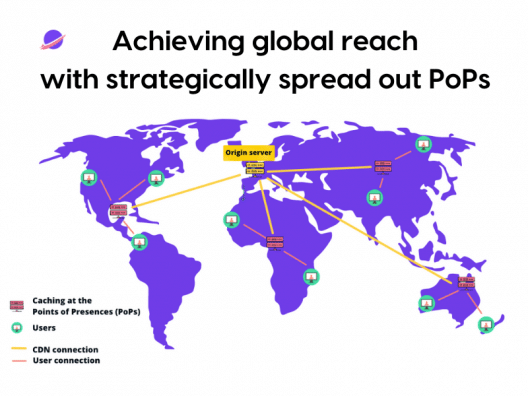
The Benefits of Using RocketCDN
Businesses are trying to reach millions of users across countries and beyond their geographical borders. The main challenge is to find ways to deliver the information to all these users efficiently and as fast as possible.
You can use RocketCDN to offer an optimal international user experience. Let’s go over the benefits of implementing it for your next project.
✅ No technical knowledge is ever required
Rocket CDN does all the heavy lifting, and you don’t need to set up the CNAME and configure your DNS record. All you need to do is link your site to the CDN, and that’s it! The CDN will be up running in a few minutes.
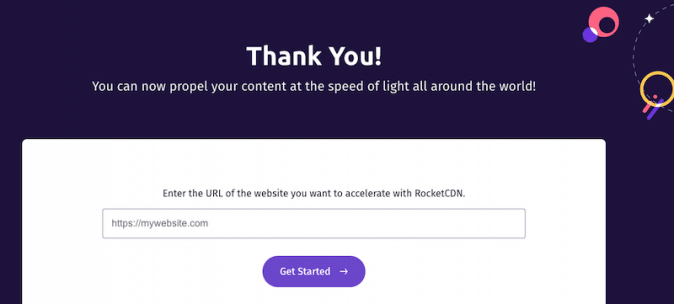
✅ Global reach and a faster-delivered content
With more than 50 points of presence on 4 continents, RocketCDN delivers content efficiently to any user worldwide. This eliminates delays and interruptions in international online transactions, which impacts the credibility of a business.
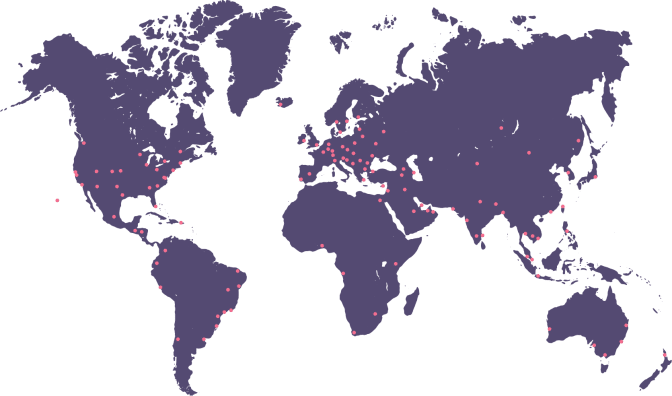
✅ Reduce network latency
RocketCDN ensures worldwide coverage and minimizes network latency caused by geographical distance. This is done through content caching, RocketCDN caches and compresses your web page and stores it in one of the PoPs (data center). As a result, the content is delivered to users based on the closest data center, reducing RTT (round-trip times) and latency.
✅ SEO performance and user experience improved
RocketCDN automatically sets canonical tags on your headers. This avoids creating duplicating content and being flagged by Google.
On top of that, it helps deliver content much faster, optimizing the Core Web Vitals. They are specific factors that Google considers important to measure the user experience of a web page. This page experience will determine the ranking of a website on Google.
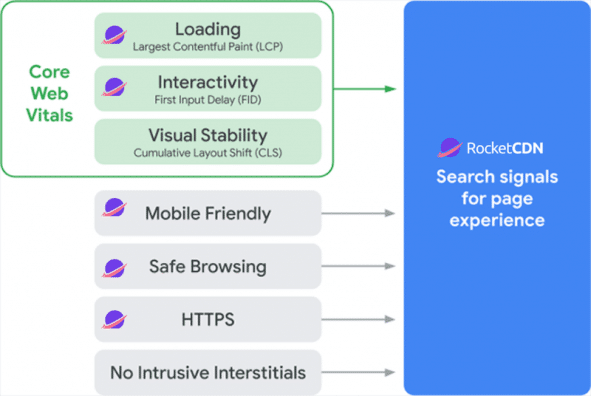
✅ Unlimited bandwidth and scalability
RocketCDN can handle traffic peaks and deliver the content as quickly as possible. In addition, the CDN offers unlimited bandwidth, so there are no bad surprises on the monthly invoice.
✅ Cheap and lower bandwidth costs with shorter routes
RocketCDN only costs $8.99/month and $7.99/month for WP Rocket’s clients. It’s safe to say that it’s one of the most affordable CDN. It also makes you save money by reducing bandwidth with shorter routes: the data is not served from the origin server but the points of presence.
✅ Improve reliability thanks to redundancy
With a hit cache ratio superior to 90%, RocketCDN’s cache can process many requests successfully compared to the number of requests it receives. The data is processed correctly, and the network redundancy powered by RocketCDN provides multiple paths for traffic. As a result, the content can keep flowing even in a breakdown.
✅ Reduce DDoS attacks
RocketCDN can protect your site by adding an extra layer of security when a cyber-attack occurs. In fact, before reaching the original server, RocketCDN will act as a filter to avoid rendering your site unavailable. Also, when a server is hit, it often generates a peak of traffic. Thanks to RocketCDN, the traffic is well balanced amongst the other servers: your business and your site won’t experience any downtime.
In conclusion, without a CDN, it would be difficult to handle all the requests and spikes in traffic coming from users spread out internationally. Using RocketCDN will help you to distribute content globally more efficiently and give a boost to your site performance. The setup takes less than 5 minutes, and you have up to 48 hours to cancel it if you don’t notice any improvements. Try RocketCDN today!